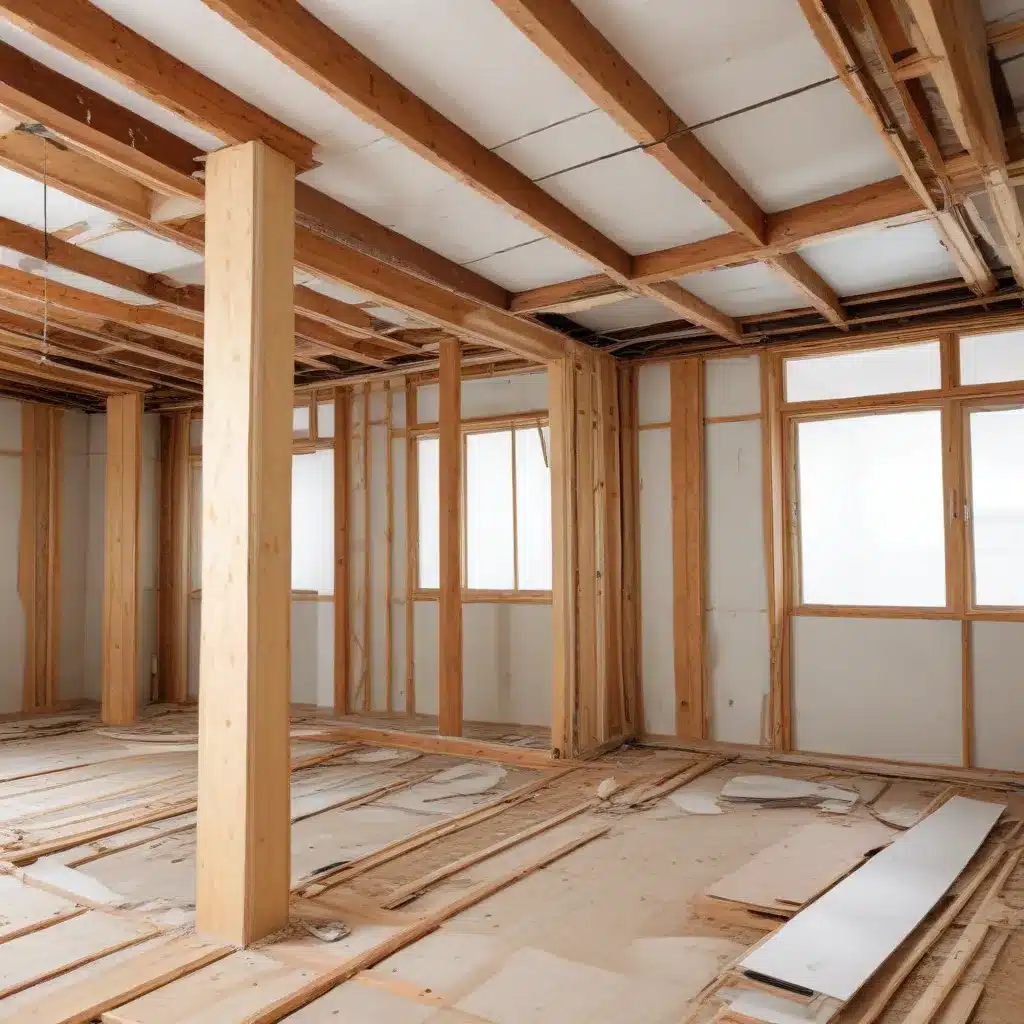As an experienced home improvement consultant for Reluctant Renovator, I’ve seen firsthand the transformative power of energy-efficient renovations. Whether you’re a homeowner looking to save on utility bills, a eco-conscious renovator aiming to reduce your carbon footprint, or a family seeking cozier, healthier living spaces, making strategic energy upgrades can yield remarkable benefits.
The EU’s ambitious goal of achieving a fully decarbonized building stock by 2050 underscores the critical importance of improving the energy performance of our homes and businesses. In fact, the building sector is responsible for a staggering 40% of the EU’s total energy consumption. By harnessing the latest energy-efficient technologies, employing eco-friendly materials, and optimizing HVAC systems, you can not only cut your utility bills but also contribute to a more sustainable future.
Identifying Opportunities for Improvement
Before diving into specific renovation projects, it’s essential to assess your home’s current energy profile. Start by reviewing your past utility bills to understand your baseline energy usage. Conducting a professional energy audit can provide a comprehensive evaluation of your property’s energy performance, pinpointing areas for improvement.
Once you have a clear understanding of your home’s energy consumption, you can begin prioritizing renovation strategies. Focus on the most impactful upgrades first, such as improving insulation, upgrading windows and doors, and addressing air leaks. These envelope-focused enhancements can dramatically reduce heat loss and gain, translating to substantial energy savings.
Envelope Enhancements
Improving Insulation
Proper insulation is the foundation of an energy-efficient home. Assess the R-value (thermal resistance) of your existing insulation and consider upgrading to higher-performing materials, such as blown-in cellulose, fiberglass batts, or spray foam. Pay special attention to insulating attics, walls, and crawl spaces to maximize thermal efficiency.
Upgrading Windows and Doors
Replacing outdated, drafty windows and doors with energy-efficient models can have a significant impact on your home’s energy performance. Look for products with high ENERGY STAR ratings, which indicate superior thermal properties and air-sealing capabilities. Double-pane or triple-pane windows and well-insulated doors can significantly reduce heat transfer, keeping your interior comfortable while lowering heating and cooling costs.
Sealing Air Leaks
Air infiltration is a common culprit of energy waste. Conduct a thorough inspection of your home, paying close attention to areas like windows, doors, electrical outlets, and attic hatches. Seal any cracks or gaps with caulk, weatherstripping, or expanding foam to prevent unwanted air exchange and improve overall comfort.
HVAC System Optimization
Efficient Heating and Cooling Technologies
The heating, ventilation, and air conditioning (HVAC) system is a major energy consumer in most homes. Consider upgrading to high-efficiency furnaces, heat pumps, or ductless mini-splits that operate with less energy input. Geothermal heat pumps are an innovative, eco-friendly option that use the earth’s natural temperature to heat and cool your home.
Ductwork Improvements
Ensuring your HVAC ductwork is properly sealed, insulated, and balanced can enhance system efficiency and airflow. Seal any visible leaks with duct sealant or mastic, and consider insulating exposed ductwork to prevent heat loss or gain.
Smart Thermostat Integration
Incorporating a smart thermostat into your HVAC system allows for precise temperature control and scheduling, helping you optimize energy use based on your household’s needs and habits. These connected devices can even learn your preferences over time, further improving efficiency.
Lighting and Appliance Upgrades
LED Lighting Retrofits
Swapping out traditional incandescent or halogen bulbs for energy-efficient LED lighting can deliver substantial energy savings. LEDs use up to 80% less energy than conventional bulbs while providing longer lifespans and superior lighting quality.
Energy-Efficient Appliance Replacements
If your major home appliances, such as refrigerators, washing machines, or dishwashers, are more than a decade old, consider upgrading to ENERGY STAR-certified models. These modern, high-efficiency appliances can significantly reduce your household’s energy consumption and water usage.
Smart Home Automation
Integrating smart home technology like automated lighting, programmable thermostats, and remote-controlled appliances can streamline your energy use and provide real-time monitoring. These innovative solutions empower you to better manage your home’s energy profile and identify opportunities for further improvements.
Financing and Incentives
Funding energy-efficient renovations can be a concern for many homeowners, but there are numerous financing options and incentive programs available to help offset the upfront costs.
Accessing Energy Efficiency Rebates
Research local, state, and federal rebate programs that offer cash-back incentives for upgrading to energy-efficient equipment, installing renewable energy systems, or improving your home’s thermal envelope. These rebates can significantly reduce your out-of-pocket expenses.
Exploring Loan Programs
Low-interest energy-efficiency loans, green mortgages, and on-bill financing schemes can provide the necessary capital to fund your renovation projects. These specialized lending options are designed to make energy-saving upgrades more accessible and affordable.
Factoring in Long-Term Savings
While the initial investment in energy-efficient renovations may seem daunting, it’s crucial to consider the long-term financial and environmental benefits. The money you save on utility bills over the years can often offset the upfront costs, making these upgrades a wise and sustainable choice.
By collaborating with experienced contractors, leveraging the latest technologies, and tapping into available incentives, you can transform your home into an energy-efficient haven. The Reluctant Renovator community is here to support you every step of the way, providing the resources and guidance you need to make informed decisions and maximize the impact of your renovations. Embrace the power of energy efficiency and unlock the true potential of your living spaces.




